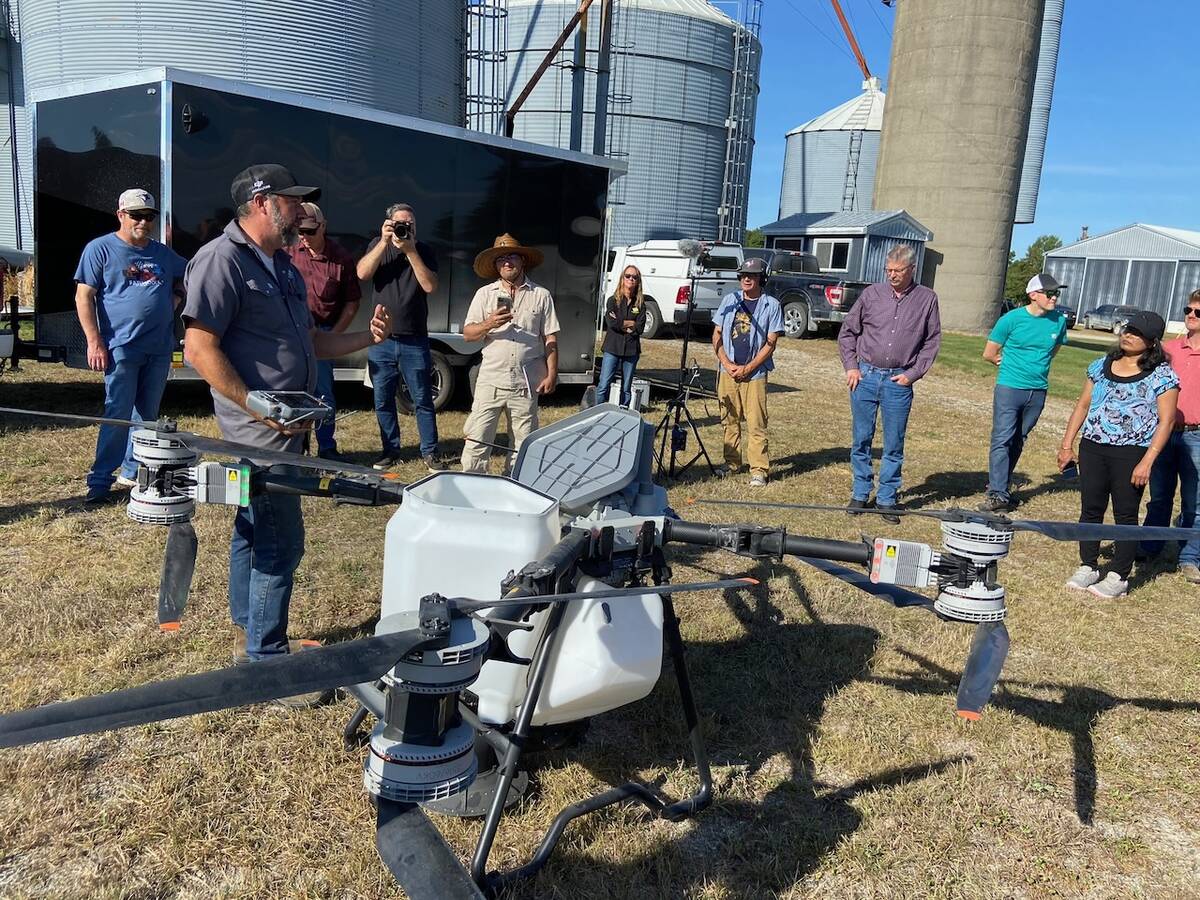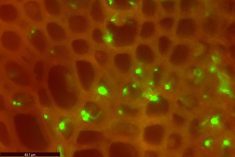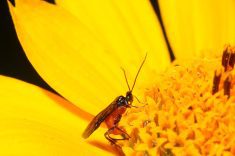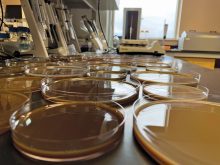Soybean aphids haven’t been a problem in Mani toba so far this year, although populations are increasing in some fields in the Beausejour and southern Interlake area.
That’s what John Gavloski, an entomologist with Manitoba Agriculture, Food and Rural Initiatives said here Aug. 18 during the first “harvest” Crop Diagnostic School at the University of Manitoba Ian N. Morrison Research Farm.
“So far I’m not aware of anybody spraying for them,” he said. “Some fields are close.”
Read Also

Drones jumpstart cover crop planting
Drones are a tool that can help farmers with cover crop planting in still-growing corn and soybeans.
The economic threshold for spraying soybean aphids is when plants in the R1 (beginning bloom) to R5 (beginning seed) growth stages on average have at least 250 aphids per plant and the population is increasing.
Soybean aphids, which are found on the underside of soybean leaves, are very small, light to yellow green in colour and move slowly.
They also have many natural predators. That’s why it’s important to be sure soybean aphid populations are increasing before spraying an insecticide because it will also kill the insects that prey on the aphids.
Counting such small insects is difficult. The following link shows a soybean aphid scouting card with information on scouting and thresholds, as well as its common natural enemies: http://www.soybean.on.ca/aphidinfo/uploads soybean_aphid_ scouting_card_english. pdf.
Green clover worms are also showing up in edible bean and soybean fields, but seldom warrant spraying, Gavloski said. Right now they’re causing some minor defoliation at the tops of bean plants, he said. Because green clover worm feeding occurs at the top, the damage sometimes looks worse than it is.
The insect blows in from the United States about once in 10 years and usually has two generations. The worms were early into their second generation last week, Gavloski said.
Green clover worms are easy to identify because when touched they “jump around and go nuts.”
ALLAN DAWSON PHOTOS
TINY SPECS:Soybean aphids, found on the underside of soybean plant leaves, are hard to see.
ERRATIC BEHAVIOUR:When green clover worms are touched “they go nuts.”
INSECT FEEDING:This soybean leaf shows signs of green clover worm feeding.















